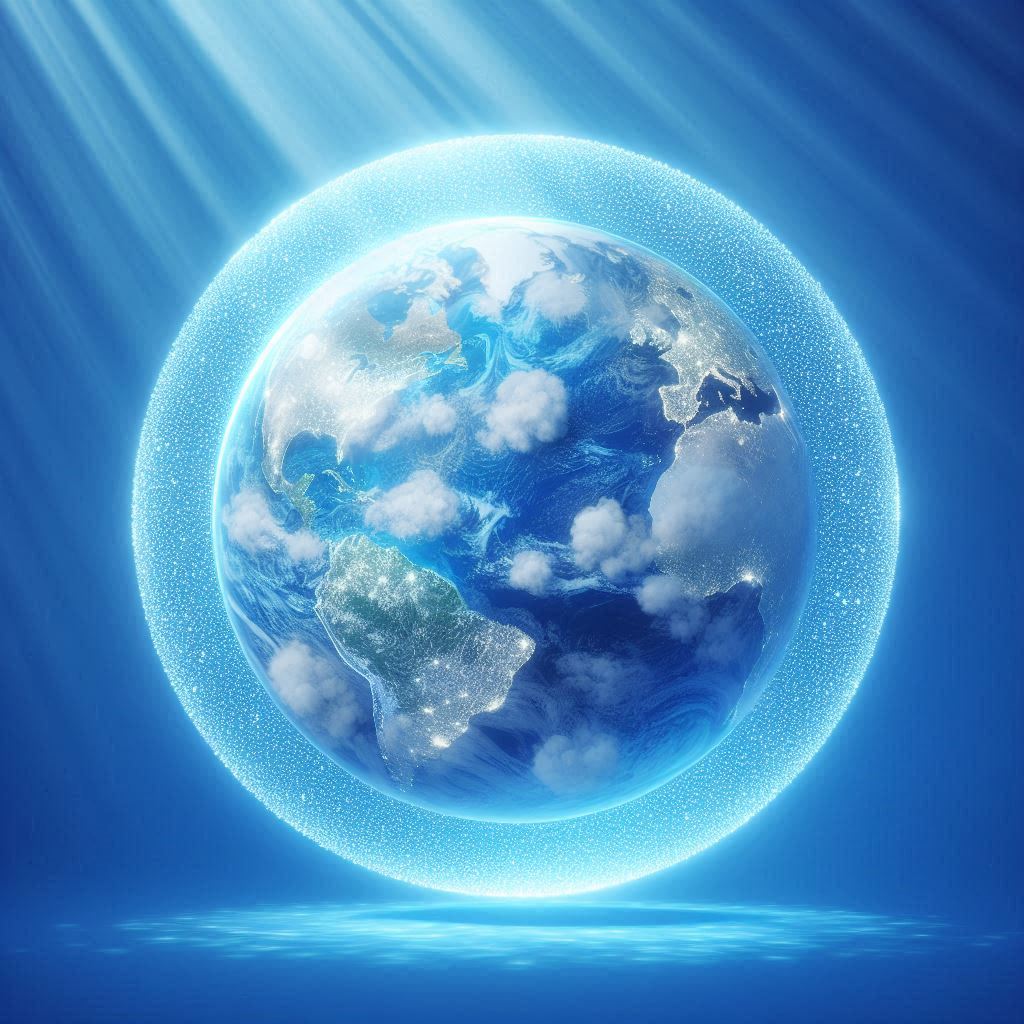Fortunately, ozone forms naturally in the stratosphere, creating a protective barrier that allows us to enjoy the sun without turning into red lobsters. And to think that all this is possible thanks to three tiny oxygen atoms holding hands in a molecular embrace!
Ozone and its roles
World Ozone Layer Protection Day, celebrated every year on 16 September, is an opportunity to reflect on the importance of the ozone layer and its preservation.
Ozone is a molecule composed of three oxygen atoms (O₃) that plays a crucial role in protecting life on Earth.
Its formation occurs when oxygen molecules (O₂) are dissociated by UV radiation, releasing oxygen atoms that combine with other oxygen molecules.
This gas, present in small quantities in the atmosphere, is crucial in shielding the planet from the sun’s harmful ultraviolet (UV) rays.
Its molecule, depending on where it is in the atmosphere, takes on opposite roles.
In the troposphere, it contributes to smog and can cause respiratory problems and damage plants.
In contrast, in the stratosphere, it forms a protective layer, the ozone layer (between 15-35 km altitude) that shields us from the sun’s most harmful ultraviolet rays.
Therefore, the cycle of ozone formation and destruction is continuous and maintains a balance that protects the Earth from UV radiation.
The Ozone Hole
In the 1980s, scientists made an alarming discovery: the ozone layer over Antarctica was thinning significantly, a phenomenon that became known as the ozone hole.
This hole compromises the Earth’s ability to protect itself from the sun’s harmful ultraviolet rays.
This is mainly caused by chlorofluorocarbons (CFCs) which, when released into the atmosphere, break down under ultraviolet light, releasing highly reactive chlorine and bromine atoms, destroying the ozone layer.
CFCs were widely used in various industries, including refrigeration, air conditioning and as propellants in aerosols.
Increased exposure to UV radiation leads to an increase in skin problems and diseases in humans.
Marine ecosystems are also severely damaged, as many forms of aquatic life are sensitive to changes in UV radiation levels.
But there are also climate implications: this is a greenhouse gas, and its variation alters climate and weather patterns, contributing to global climate change.
Policies and regulations
The global response to this environmental crisis was significant, with the 1987 Montreal Protocol.
There is talk of an international agreement to phase out the production and consumption of CFCs and other ozone-depleting substances.
Since then, the protocol has been amended and strengthened several times, leading to a substantial reduction in CFC emissions and a slow but progressive return to normal conditions.
Some studies suggest that the hole could close completely by the middle of this century, but this will depend on continued compliance with international agreements and the adoption of sustainable alternatives.
The success of this courageous decision is often cited as a model for other international environmental initiatives, demonstrating that collective action and political will can bring about significant and lasting change.
Play for the planet!
